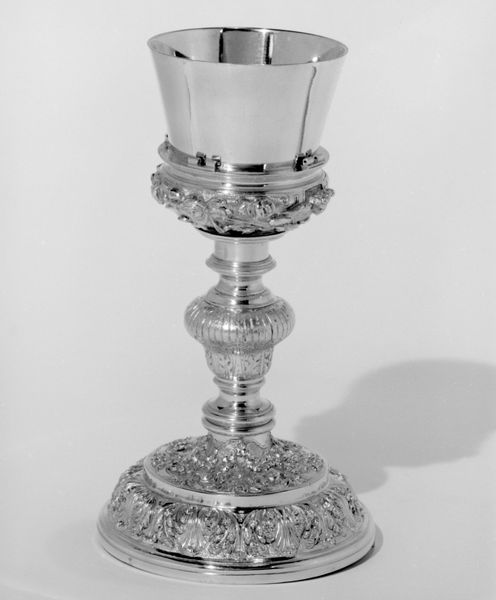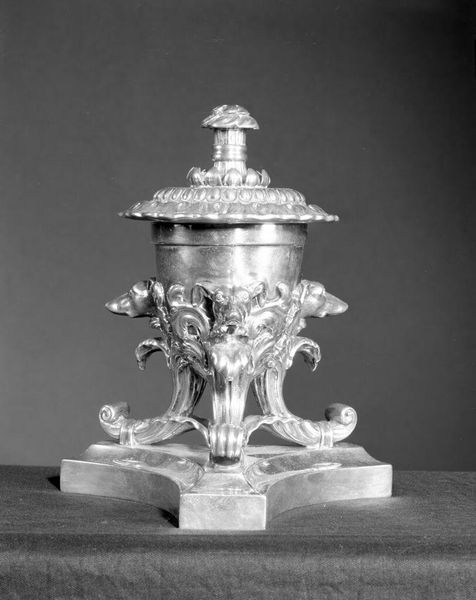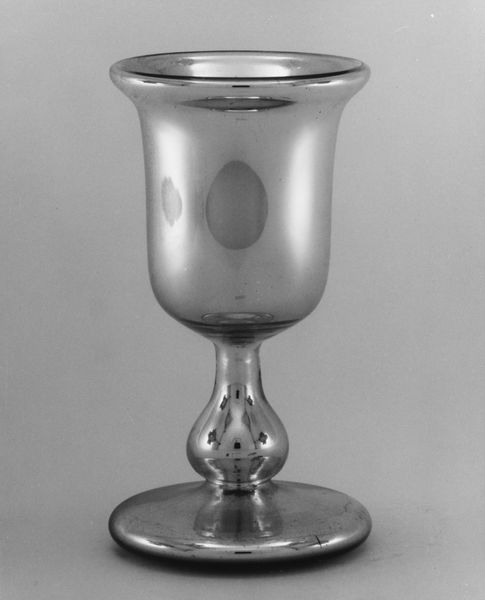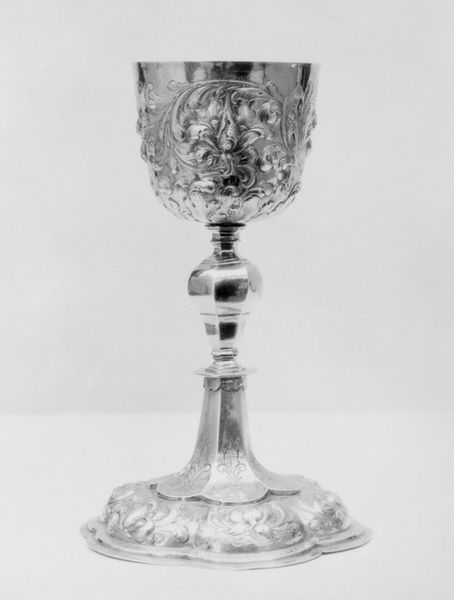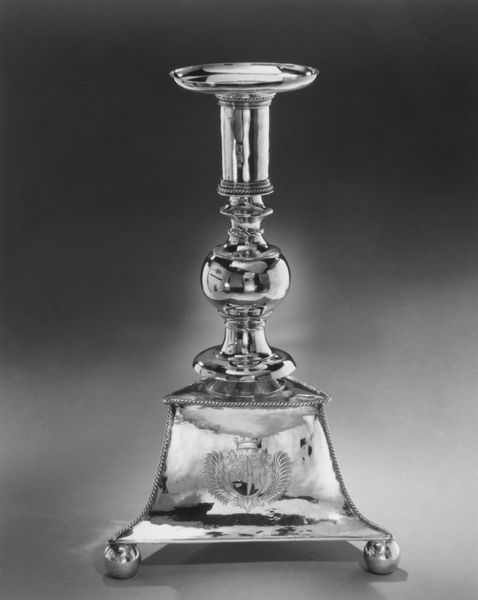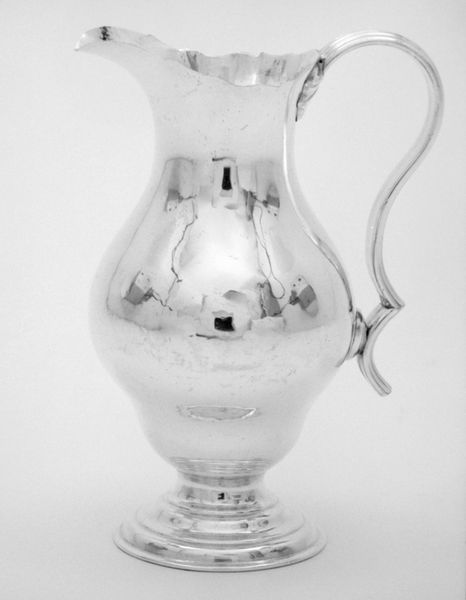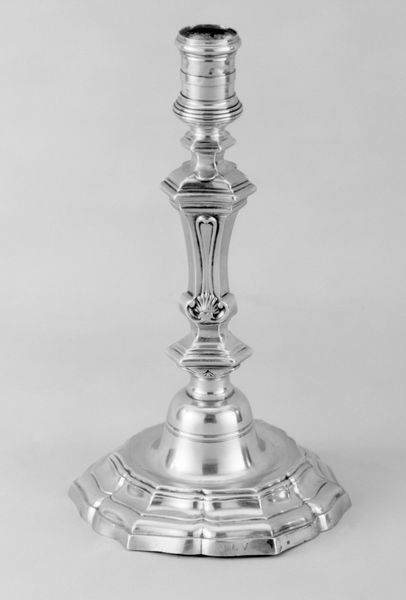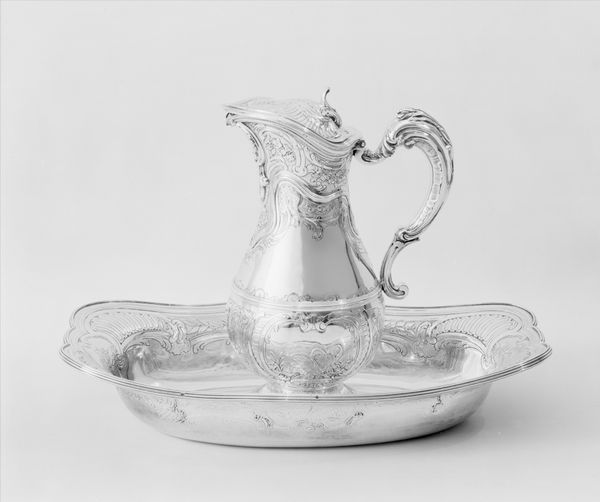
Presentation Smallsword with Scabbard of Captain W. E. Cracraft 1797 - 1798
0:00
0:00
silver, metal, sculpture, engraving
#
neoclacissism
#
silver
#
metal
#
sculpture
#
black and white
#
armor
#
engraving
#
sword
Dimensions: L. 38 3/16 in. (97 cm); L. of blade 31 1/2 in. (80 cm); Wt. 14 oz. (396.9 g); Wt. of scabbard 2 oz. (56.7 g)
Copyright: Public Domain
Editor: This is "Presentation Smallsword with Scabbard of Captain W. E. Cracraft," dating from 1797-1798, created by James Morisset. The use of silver and metal creates a striking, elegant effect. Its linear design suggests neoclassical refinement. What do you see in this piece, beyond its historical context? Curator: Initially, one observes the impeccable symmetry and balance inherent in the sword's design. The curves of the hilt mirror those of the scabbard’s upper section. What semiotic weight do you attribute to the engraved decorations throughout its form? Editor: They remind me of emblems – miniature artworks within the artwork. The tiny bird in the oval shape and the foliage feel very intentional, placed to evoke a sense of nobility and perhaps even a touch of whimsy, despite its primary function as a weapon. How would you categorize these choices compositionally? Curator: The visual lexicon directs us. The repetitive, circular motifs act as structural devices that compartmentalize and highlight different segments of the sword. Observe how the hilt, in particular, becomes a self-contained narrative due to this arrangement. The monochromatic rendering emphasizes the sculptural aspects, urging a reading that privileges form over color. It's all about how the line directs the eye and dictates meaning, isn't it? Editor: It truly is! I hadn't considered how much the engraving influences the structure. Thanks for this close formal reading of the sword! Curator: A pleasure. The rigorous application of structural analysis unveils depths not always immediately apparent.
Comments
No comments
Be the first to comment and join the conversation on the ultimate creative platform.

